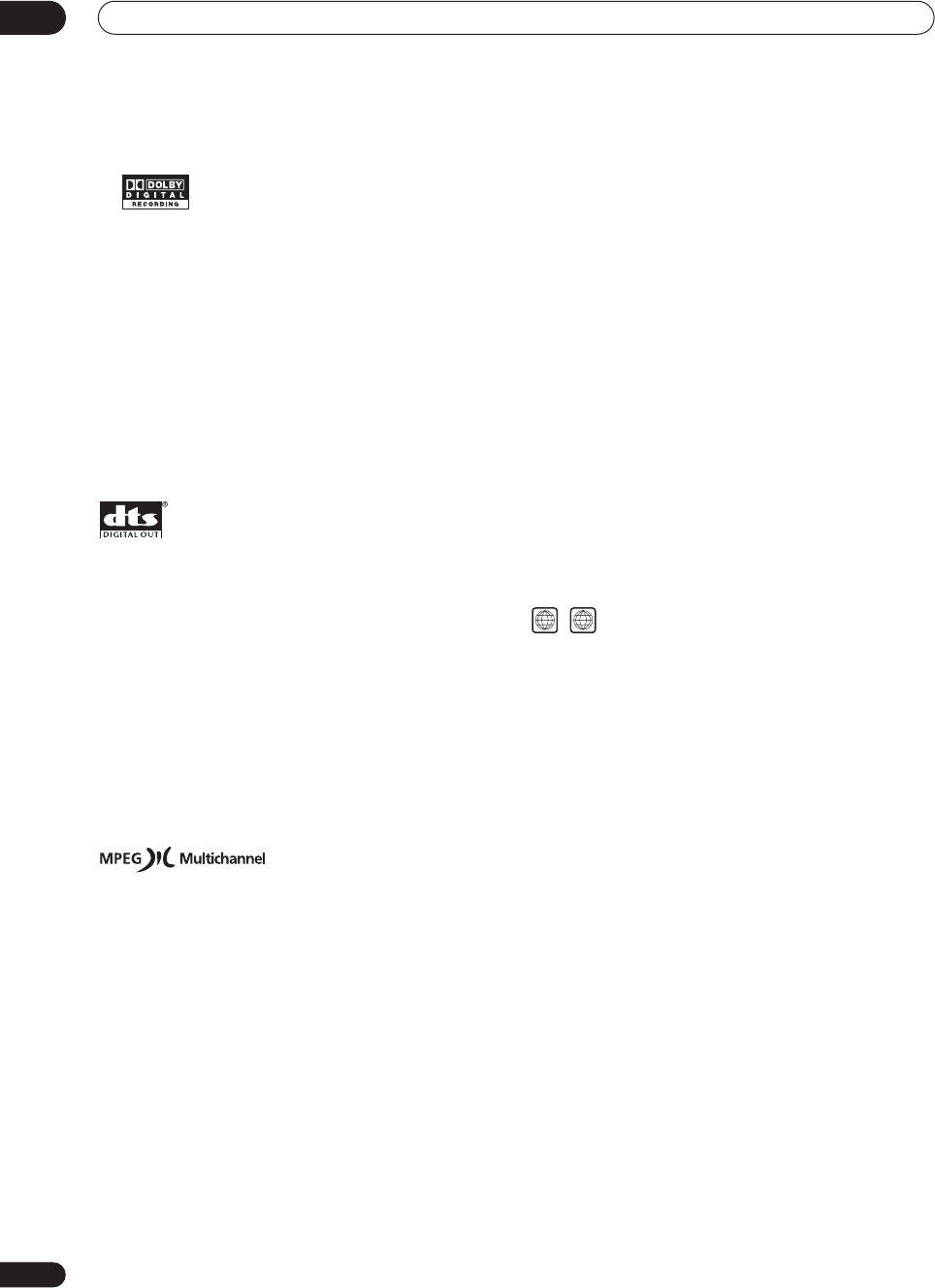
Additional information
09
64
En
Dolby Digital
Dolby® Digital Recording enables consumers to record
high-quality video with stereo sound on recordable DVD
discs. The technology, when utilized instead of PCM
recording, also saves recordable disc space, allowing for
higher video resolution or extended recording time on
each DVD. DVDs created using Dolby Digital Recording
will play back on all DVD-Video players.
Manufactured under license from Dolby Laboratories.
“Dolby” and the double-d symbol are trademarks of Dolby
Laboratories.
DTS
DTS stands for Digital Theater System. DTS is a surround
system different from Dolby Digital that has become a
popular surround sound format for movies.
“DTS” and “DTS digital Out” are registered trademarks of
digital Theater Systems, Inc.
Dynamic range
The difference between the quietest and loudest sounds
possible in an audio signal (without distorting or getting
lost in noise). Dolby Digital and DTS soundtracks are
capable of a wide dynamic range, delivering dramatic
cinema-like effects.
MPEG audio
An audio format used on Video CDs and some DVD
discs. This unit can convert MPEG audio to PCM format
for wider compatibility with digital recorders and AV
amp/receivers. See also
PCM
.
MPEG video
The video format used for Video CDs and DVDs. Video CD
uses the older MPEG-1 standard, while DVD uses the
newer and much better quality MPEG-2 standard.
PCM (Pulse Code Modulation)
The most common system of encoding digital audio,
found on CDs and DAT. Excellent quality, but requires a
lot of data compared to formats such as Dolby Digital
and MPEG audio. For compatibility with digital audio
recorders (CD, MD and DAT) and AV amp/receivers with
digital inputs, this unit can convert Dolby Digital and
MPEG audio to PCM. See also
Digital audio
.
PBC (PlayBack Control) (Video CD only)
A system of navigating a Video CD through on-screen
menus recorded onto the disc. Especially good for discs
that you would normally not watch from beginning to end
all at once—karaoke discs, for example.
Progressive scan video
Also called non-interlaced video, this method of
displaying a picture updates all the lines in one pass,
resulting in a more stable, flicker-free image than
interlaced video (for a given scanning rate).
PureCinema
Video on a DVD disc may be either video material
(originally shot on video) or film material (originally shot
on film). Video material has a frame rate of 30 frames/
second, compared to 24 frames/second for film. This
recorder converts film material to 60 frames/second (in
progressive scan mode). PureCinema adjusts the picture
so that it matches more closely the picture quality of a
cinema screen.
Regions (DVD only)
(example region code marks)
Regions associate discs and players with particular
areas of the world. This unit will only play discs that have
compatible region codes. You can find the region code of
your unit by looking on the rear panel. Some discs are
compatible with more than one region (or all regions).
Sampling frequency
The rate at which sound is measured to be turned into
digital audio data. The higher the rate, the better the
sound quality, but the more digital information is
generated. Standard CD audio has a sampling frequency
of 44.1kHz, which means 44,100 samples
(measurements) per second. See also
Digital audio
.
Title
A collection of chapters on a DVD disc. See also
Chapter
.
Track
Audio CDs and Video CDs use tracks to divide up the
content of a disc. The DVD equivalent is called a chapter.
See also
Chapter
.
1
ALL
DVR-230_KU.book Page 64 Thursday, January 27, 2005 2:42 PM


















